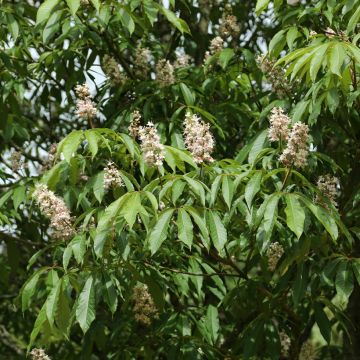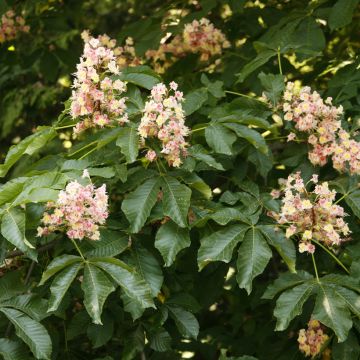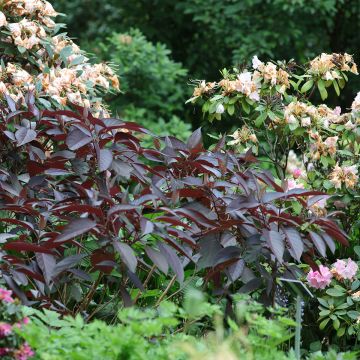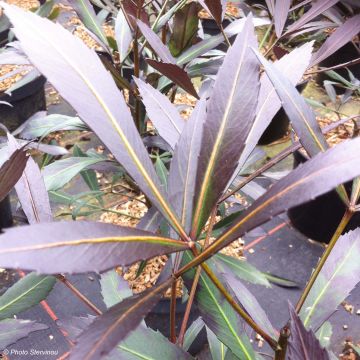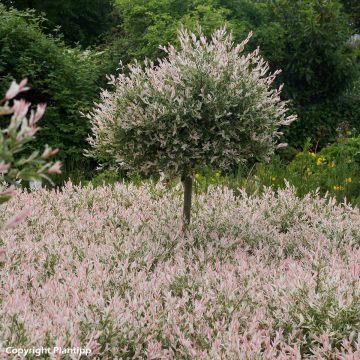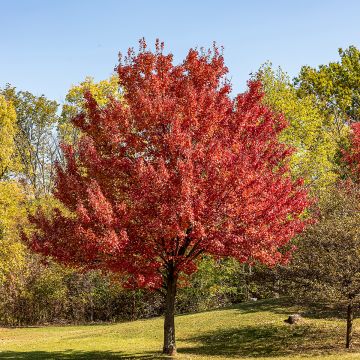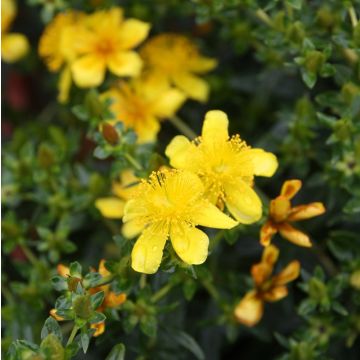

Aesculus x carnea Briotii


Aesculus x carnea Briotii
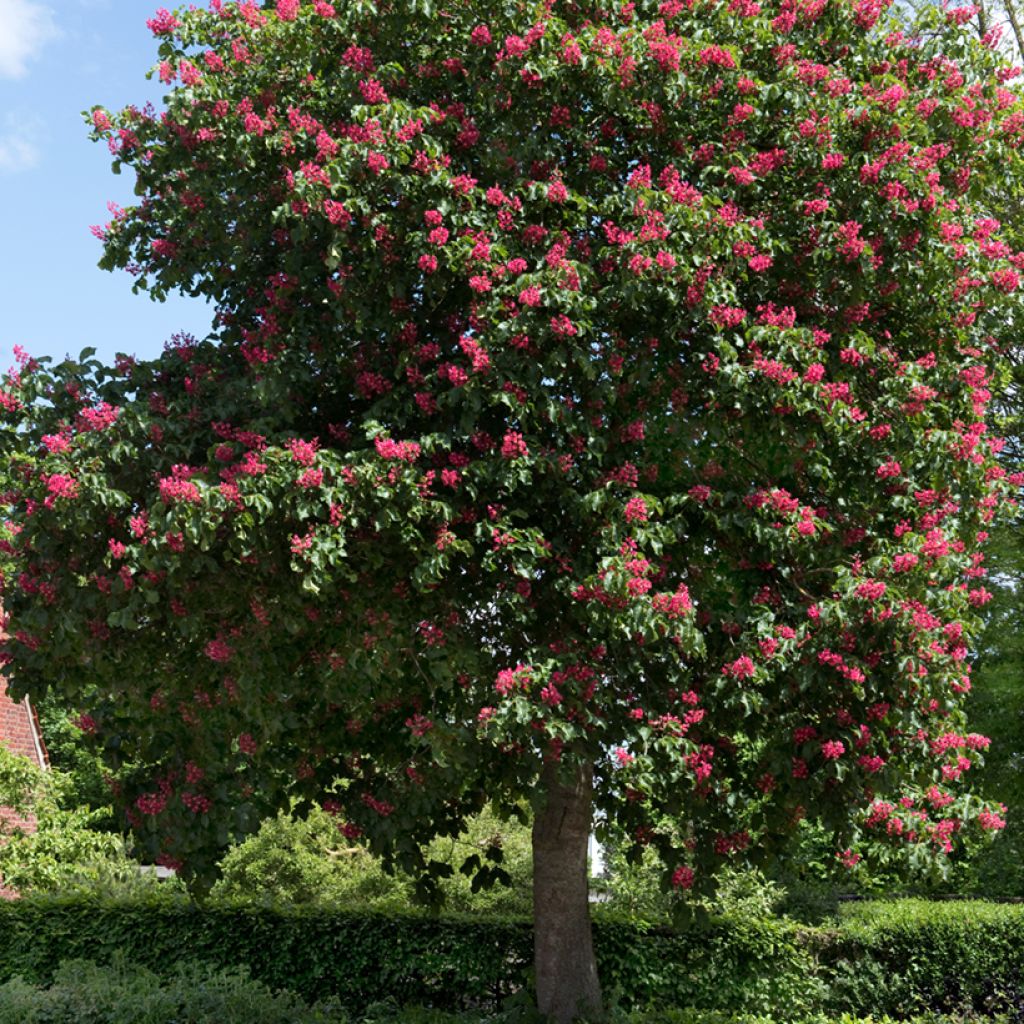

Aesculus x carnea Briotii
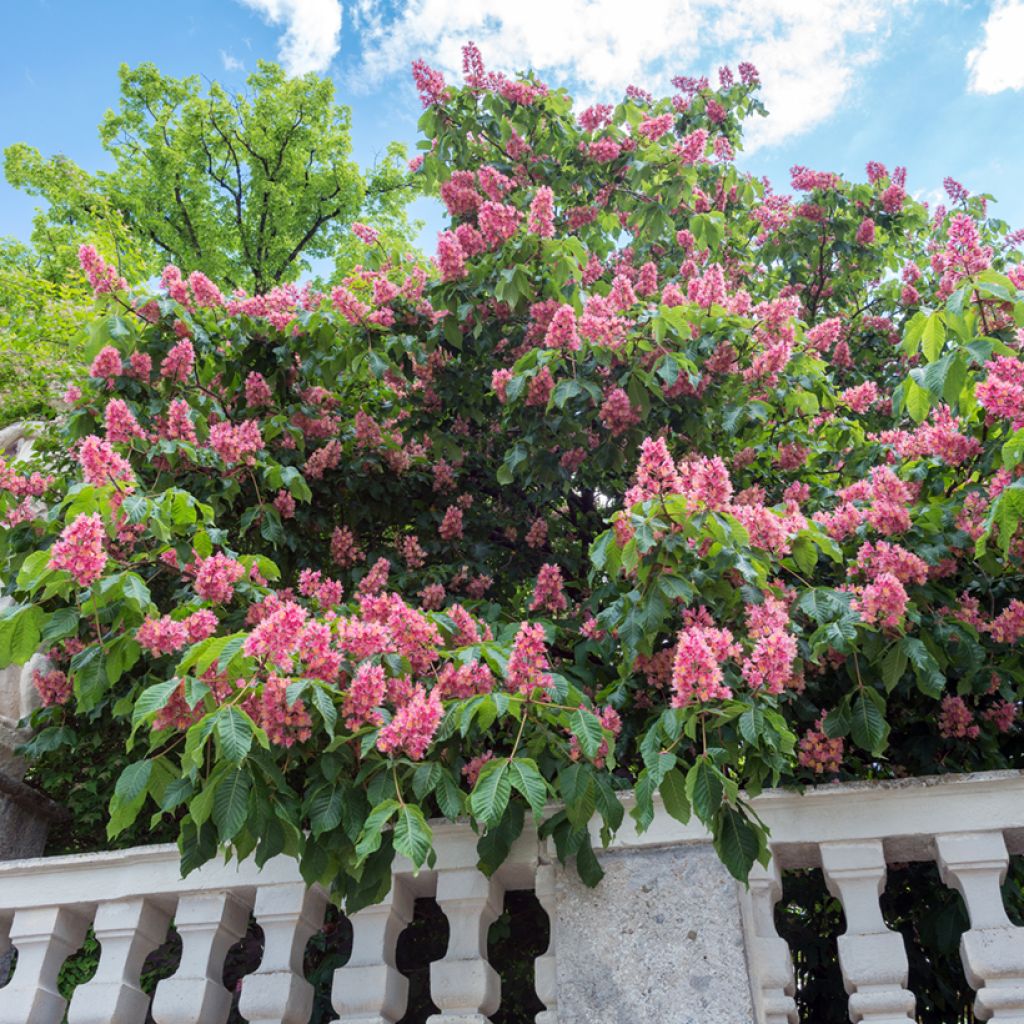

Aesculus x carnea Briotii


Aesculus x carnea Briotii


Aesculus x carnea Briotii


Aesculus x carnea Briotii


Aesculus x carnea Briotii
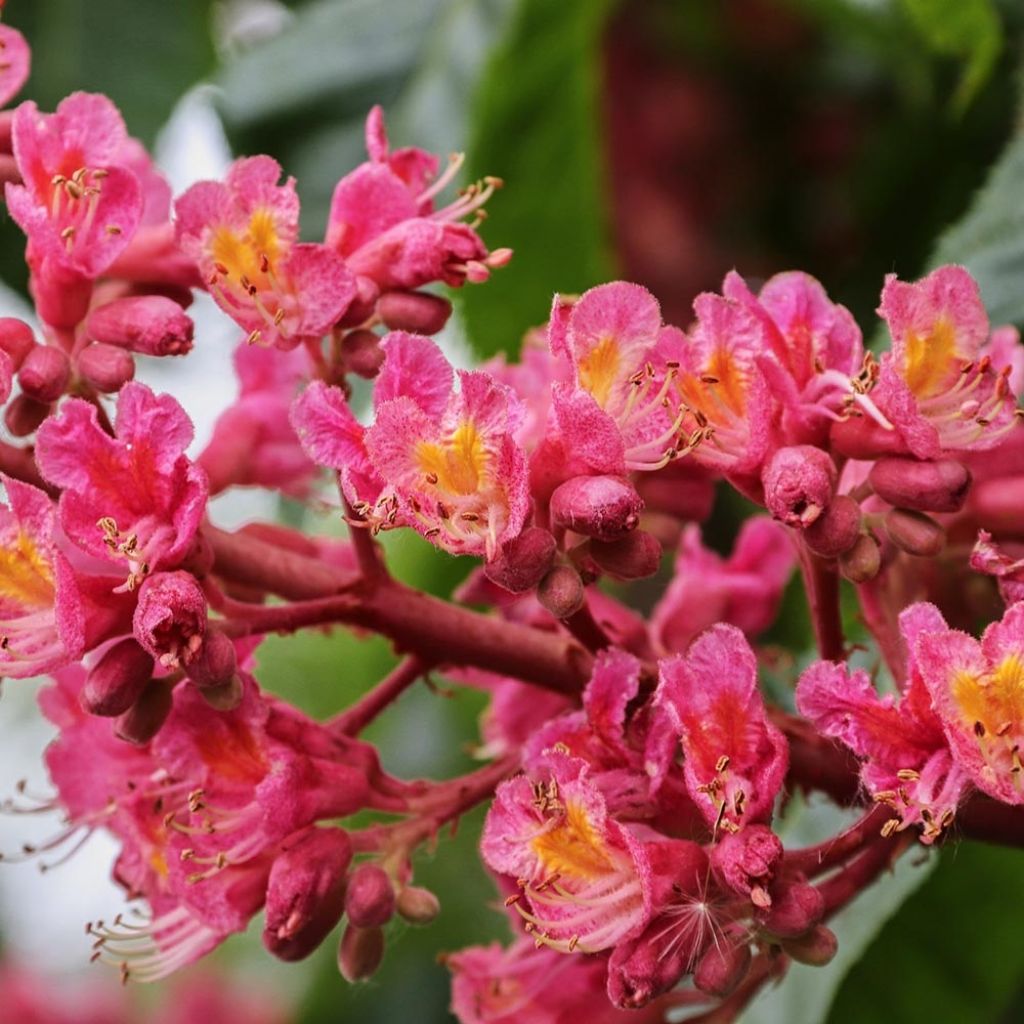

Aesculus x carnea Briotii
Aesculus x carnea Briotii
Aesculus x carnea Briotii
Red Horse Chestnut
This plant carries a 24 months recovery warranty
More information
We guarantee the quality of our plants for a full growing cycle, and will replace at our expense any plant that fails to recover under normal climatic and planting conditions.
Oversize package: home delivery by special carrier from €6.90 per order..
Express home delivery from €8.90.
Does this plant fit my garden?
Set up your Plantfit profile →
Description
This medium-sized chestnut tree bears large dark red panicles of flowers at the end of spring, with orange spots, and does not produce chestnuts. It forms a tree 10 to 12m (32ft 10in to 39ft 5in) tall and 8m (26ft 2in) in diameter, with palmate foliage, divided into 5 dark green wavy leaflets. It is perfectly hardy and not very demanding in terms of soil and exposure, and tolerates drought quite well.
Aesculus x carnea 'Briotii' is a horticultural hybrid obtained in Germany at the beginning of the 20th century, often planted as an avenue tree. It is a cross between Aesculus hippocastanum, a more vigorous subject, native to the mountain plains of northwestern Greece, and Aesculus pavia, a small tree or bush native to the southeastern United States, with scarlet flowers and more drought-resistant. 'Briotii' forms a small chestnut tree with a straight trunk, 10 to 12m (32ft 10in to 39ft 5in) tall and 8m (26ft 2in) wide, perfectly hardy, widely used in avenue alignments. It has a medium growth rate, with a rounded, compact habit and forms a dense ovoid crown. Its large branches produce smooth, slightly sticky buds. Its deciduous leaves, 15cm (5.9in) wide, are divided into 5 elliptical and wavy leaflets, with a few large teeth, dark green in colour. Their undersides are slightly lighter. They turn beautifully yellow or orange in autumn. The inflorescences, in the form of large upright panicles, slightly larger and darker than those of Aesculus x carnea, bloom in May-June. The small flowers, very abundant, are dark purplish red with orange spots. The flowering is sterile, preventing the formation of fruits, which are often considered a constraint for road maintenance. The trunk of this small tree is covered with smooth, dark grey bark.
Aesculus x carnea 'Briotii' adapts to any deep and fertile, humus-rich soil, preferably moist although it is more drought-resistant than its parent, the Horse Chestnut (Aesculus hippocastanum), and a sunny location. It can be used as a specimen tree but also in a shrub bed associated with a Hydrangea paniculata, an Hydrangea quercifolia, a Cotinus 'Royal Purple', rosebay laurels or even a large rhododendron if the soil is acidic. Planted as a specimen or in a row along a large alley, it can accompany the flowering of the cream-white-flowered Horse Chestnut as well as perennials such as peonies, daylilies, and roses in a romantic-style garden.
Report an error about the product description
Aesculus x carnea Briotii in pictures
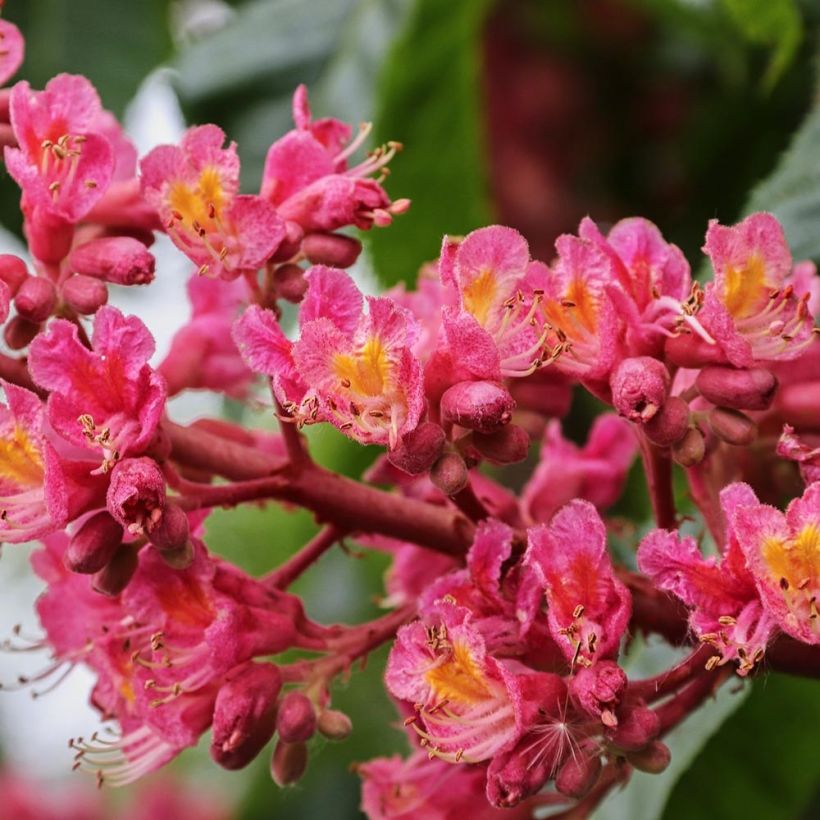





Plant habit
Flowering
Foliage
Botanical data
Aesculus
x carnea
Briotii
Hippocastanaceae
Red Horse Chestnut
Cultivar or hybrid
Other Aesculus - Horse Chestnut
Planting and care
Aesculus x carnea 'Briotii' is planted in spring or autumn in a deep, moist, humus-rich, slightly acidic to even acidic soil in a sunny location. Deep ploughing is recommended before planting. Reserve space for it as it can reach a width of 8m (26ft 2in). Water and mulch to keep the soil fresh. Fertilize in spring. Prune in February by removing crossing branches or to raise the crown. It may be susceptible to attacks from cockchafer, scale insects, and diseases such as coral disease, canker, or foliar spots.
Planting period
Intended location
Care
This item has not been reviewed yet - be the first to leave a review about it.
Striking foliage shrubs
Haven't found what you were looking for?
Hardiness is the lowest winter temperature a plant can endure without suffering serious damage or even dying. However, hardiness is affected by location (a sheltered area, such as a patio), protection (winter cover) and soil type (hardiness is improved by well-drained soil).

Photo Sharing Terms & Conditions
In order to encourage gardeners to interact and share their experiences, Promesse de fleurs offers various media enabling content to be uploaded onto its Site - in particular via the ‘Photo sharing’ module.
The User agrees to refrain from:
- Posting any content that is illegal, prejudicial, insulting, racist, inciteful to hatred, revisionist, contrary to public decency, that infringes on privacy or on the privacy rights of third parties, in particular the publicity rights of persons and goods, intellectual property rights, or the right to privacy.
- Submitting content on behalf of a third party;
- Impersonate the identity of a third party and/or publish any personal information about a third party;
In general, the User undertakes to refrain from any unethical behaviour.
All Content (in particular text, comments, files, images, photos, videos, creative works, etc.), which may be subject to property or intellectual property rights, image or other private rights, shall remain the property of the User, subject to the limited rights granted by the terms of the licence granted by Promesse de fleurs as stated below. Users are at liberty to publish or not to publish such Content on the Site, notably via the ‘Photo Sharing’ facility, and accept that this Content shall be made public and freely accessible, notably on the Internet.
Users further acknowledge, undertake to have ,and guarantee that they hold all necessary rights and permissions to publish such material on the Site, in particular with regard to the legislation in force pertaining to any privacy, property, intellectual property, image, or contractual rights, or rights of any other nature. By publishing such Content on the Site, Users acknowledge accepting full liability as publishers of the Content within the meaning of the law, and grant Promesse de fleurs, free of charge, an inclusive, worldwide licence for the said Content for the entire duration of its publication, including all reproduction, representation, up/downloading, displaying, performing, transmission, and storage rights.
Users also grant permission for their name to be linked to the Content and accept that this link may not always be made available.
By engaging in posting material, Users consent to their Content becoming automatically accessible on the Internet, in particular on other sites and/or blogs and/or web pages of the Promesse de fleurs site, including in particular social pages and the Promesse de fleurs catalogue.
Users may secure the removal of entrusted content free of charge by issuing a simple request via our contact form.
The flowering period indicated on our website applies to countries and regions located in USDA zone 8 (France, the United Kingdom, Ireland, the Netherlands, etc.)
It will vary according to where you live:
- In zones 9 to 10 (Italy, Spain, Greece, etc.), flowering will occur about 2 to 4 weeks earlier.
- In zones 6 to 7 (Germany, Poland, Slovenia, and lower mountainous regions), flowering will be delayed by 2 to 3 weeks.
- In zone 5 (Central Europe, Scandinavia), blooming will be delayed by 3 to 5 weeks.
In temperate climates, pruning of spring-flowering shrubs (forsythia, spireas, etc.) should be done just after flowering.
Pruning of summer-flowering shrubs (Indian Lilac, Perovskia, etc.) can be done in winter or spring.
In cold regions as well as with frost-sensitive plants, avoid pruning too early when severe frosts may still occur.
The planting period indicated on our website applies to countries and regions located in USDA zone 8 (France, United Kingdom, Ireland, Netherlands).
It will vary according to where you live:
- In Mediterranean zones (Marseille, Madrid, Milan, etc.), autumn and winter are the best planting periods.
- In continental zones (Strasbourg, Munich, Vienna, etc.), delay planting by 2 to 3 weeks in spring and bring it forward by 2 to 4 weeks in autumn.
- In mountainous regions (the Alps, Pyrenees, Carpathians, etc.), it is best to plant in late spring (May-June) or late summer (August-September).
The harvesting period indicated on our website applies to countries and regions in USDA zone 8 (France, England, Ireland, the Netherlands).
In colder areas (Scandinavia, Poland, Austria...) fruit and vegetable harvests are likely to be delayed by 3-4 weeks.
In warmer areas (Italy, Spain, Greece, etc.), harvesting will probably take place earlier, depending on weather conditions.
The sowing periods indicated on our website apply to countries and regions within USDA Zone 8 (France, UK, Ireland, Netherlands).
In colder areas (Scandinavia, Poland, Austria...), delay any outdoor sowing by 3-4 weeks, or sow under glass.
In warmer climes (Italy, Spain, Greece, etc.), bring outdoor sowing forward by a few weeks.


































